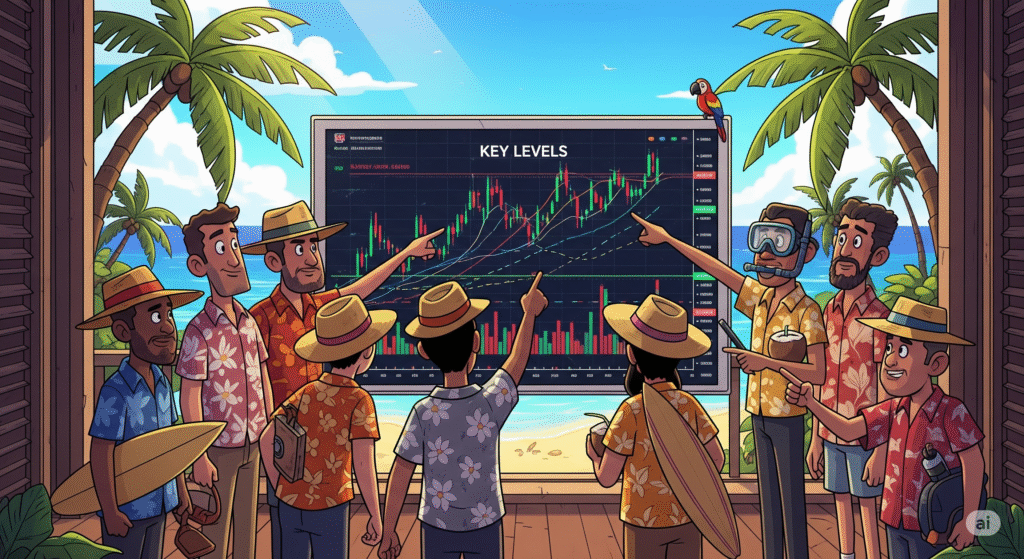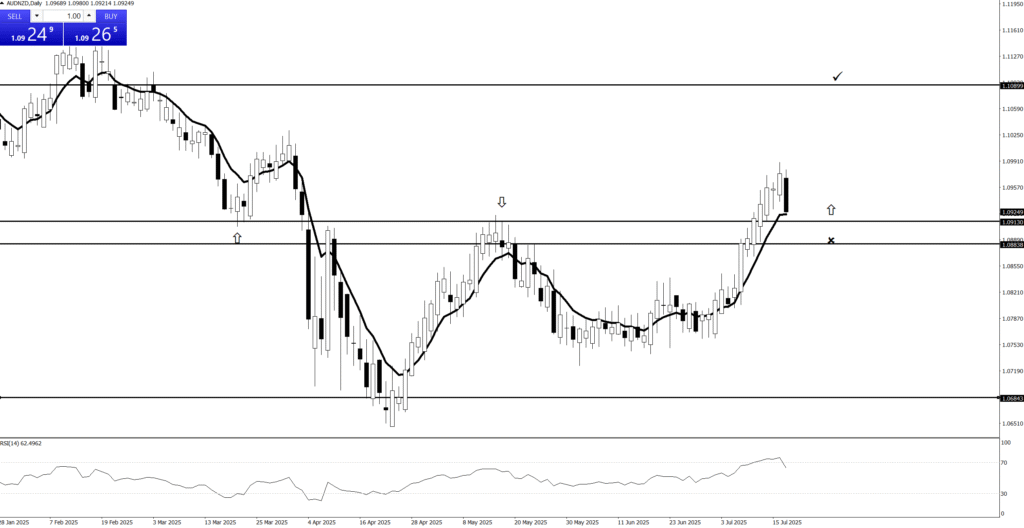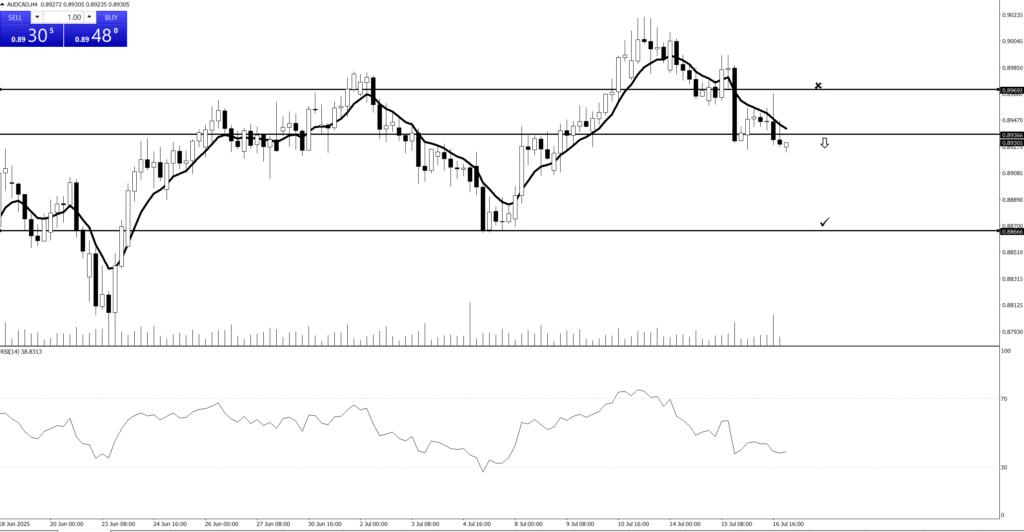The Power of Key Levels


When it comes to the stock market, key levels are like those ridiculously loud, overly dramatic friends who always know where the party’s at, or more importantly, where it’s about to end. You know, the ones who scream, “STOP! NO FURTHER!” when the price hits a certain point, or whisper, “Pssst, over here, there’s a bargain!”
Imagine a stock chart as a wild, untamed roller coaster. Key levels are those crucial points where the track either flattens out for a bit of a breather (that’s support—a comfy couch for prices), or suddenly decides to plummet or shoot for the moon (that’s resistance—a brick wall for upward ambition, or a trampoline for a bounce).
These levels aren’t just random lines drawn by bored analysts. Oh no, they’re born from the collective psyche of countless traders, all staring at their screens, hoping for a sign. When enough people collectively agree, “Yup, this price looks like a good place to buy,” you get a support level so strong, it could probably hold up a baby elephant. Conversely, if everyone’s thinking, “Time to dump this hot potato!” you hit a resistance level that acts like a bouncer at an exclusive club—no entry for higher prices!
The real power of key levels lies in their uncanny ability to make us feel like we’re almost, almost psychics. “Aha!” we exclaim, stroking our imaginary beards, “I knew it would bounce off that $100 mark! It’s obvious!” (Even though last week we thought it was going to the moon, and it went to the basement).
So, next time you’re eyeing a stock, remember the key levels. They’re not magic, but they’re darn good at telling you where the market’s been stuck in traffic, where it might take a pit stop, or where it’s finally ready to hit the open road. Just don’t expect them to do your laundry. Their powers have limits.
💰Quotes:
“Enter the trade — then sit on your hands like a monk!”
“We don’t click and panic. We click and chill.”
“Traders who wait, get paid. Traders who fidget… donate!”
“We enter the trade, then do absolutely nothing like pros.”
“Let the market work. You’re not its boss.”
💰Normal Tone Slogans:
“Enter with a plan, then let the trade play out.”
“The work is in the setup — the result comes with patience.”
“We don’t babysit trades. We trust our edge.”
“Entry is action. Waiting is discipline.”
“After entry, emotion has no place — only patience.”

Add Your Heading Text Here
Lorem ipsum dolor sit amet, consectetur adipiscing elit. Ut elit tellus, luctus nec ullamcorper mattis, pulvinar dapibus leo.

Trading Charts with Price Action: Just Reading the Market’s Face (No Brain Scans Required!)
Tired of charts that look like a spaghetti factory exploded on a rollercoaster? Good news! With Price Action, we skip the brain-melting complexity and just read the market’s own hilarious facial expressions.
Forget a thousand blinking indicators that argue with each other. We’re simply watching what the candlesticks are actually doing. Is the market confidently flexing its biceps (going up)? Is it stomping its foot like a toddler (going down)? Or is it just shrugging its shoulders in total indecision?
It’s like understanding someone’s body language without needing a translator. The price tells its own messy, dramatic, often funny story directly on the chart. So, ditch the math degree, grab your popcorn, and learn to read the market’s true emotions – unfiltered, raw, and often, surprisingly profitable!
- Is the current trend bullish or bearish?
2. Is the main trend bullish or bearish on selected timeframe?
3. Where is price now? where are the keylevels?
4. Are there any Price Action?
5. Are there any failed Price Action?
6. Is there evidence that the market is getting rid of buyers or sellers?
💰“The Power of Price Action”
Quotes:
“Let Price Tell the Story.”
“Price Never Lies – Everything Else Might.”
“Trade What You See, Not What You Think.”
“Candles Speak Louder Than Indicators.”
- “The Truth is in the Candles.”
💰What Are Event Areas?
Definition: Price levels or zones where major events (like economic reports, central bank decisions, or geopolitical news) triggered big moves.
Why Important: These areas tend to have a lot of orders clustered, making them potential reversal or breakout points.
How Traders Use Them: As reference points for entries, exits, or stops because price often reacts strongly when revisiting these zones.

💰
Angle of the Trend: Is the slope steep and consistent, or shallow and bumpy? A steeper, more consistent slope often indicates a stronger, more reliable “friend.”

💰🧘 Confirming tools (at a glance):
Moving Averages: If you have them on your chart, are the prices consistently above a rising moving average (uptrend friend) or below a falling one (downtrend friend)? Are the moving averages themselves sloped in a clear direction?
Higher Highs/Higher Lows or Lower Lows/Lower Highs: Can you easily spot this “staircase” pattern?

💰In essence, your very first action is a rapid visual assessment: “Where is the market clearly trying to go?” If it’s not clearly trying to go anywhere, then your strategy (following the trend) dictates that you don’t have a trade.

